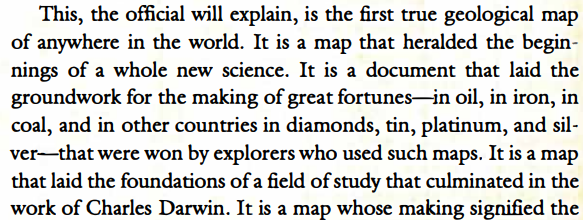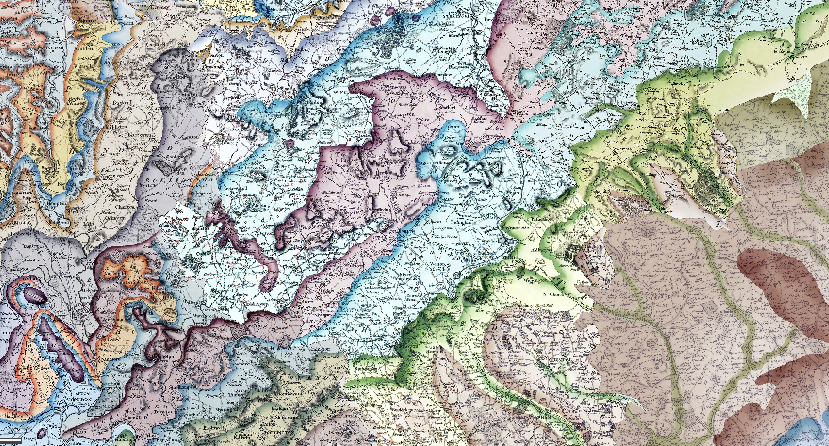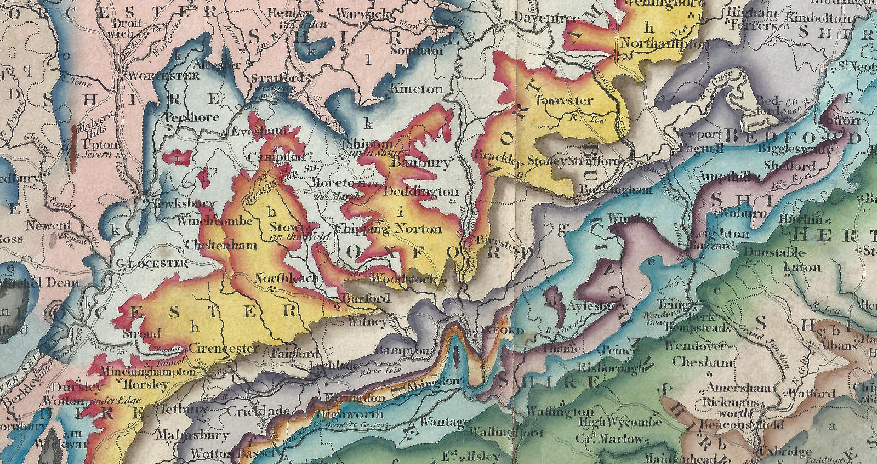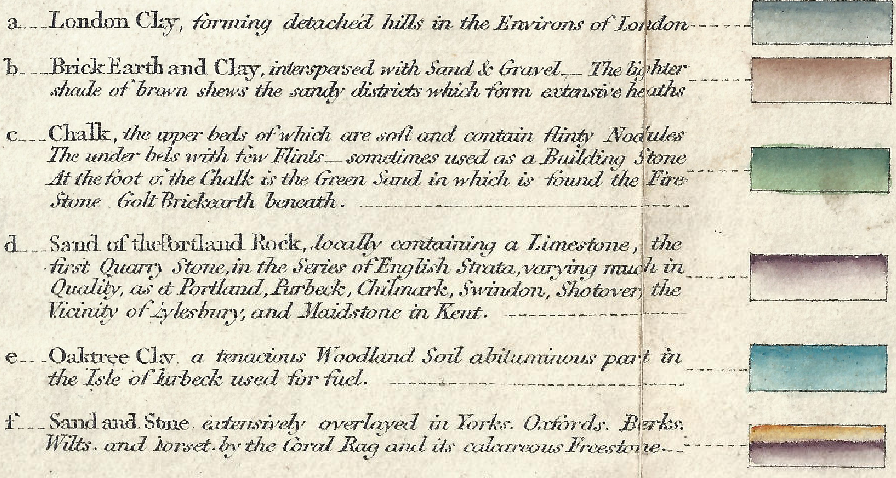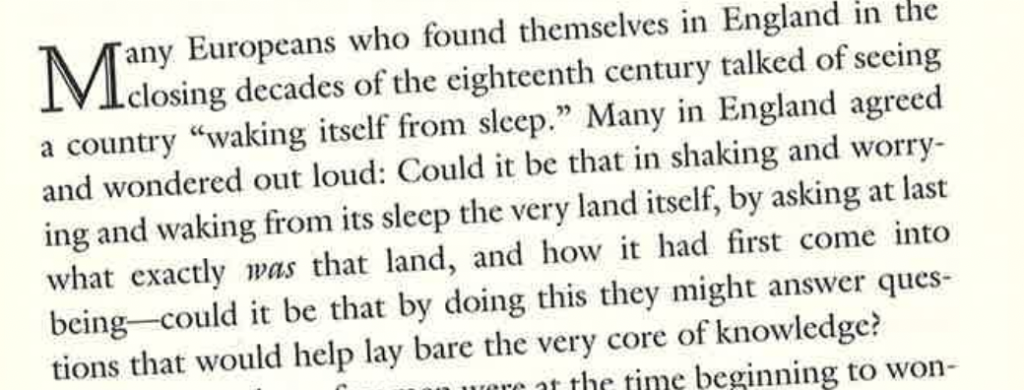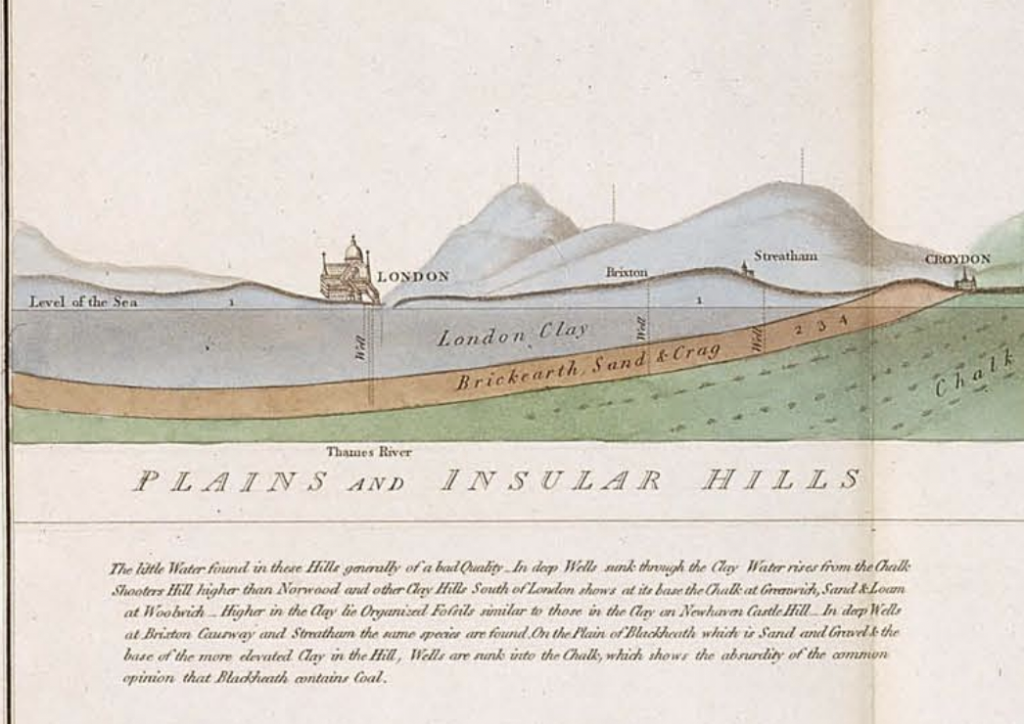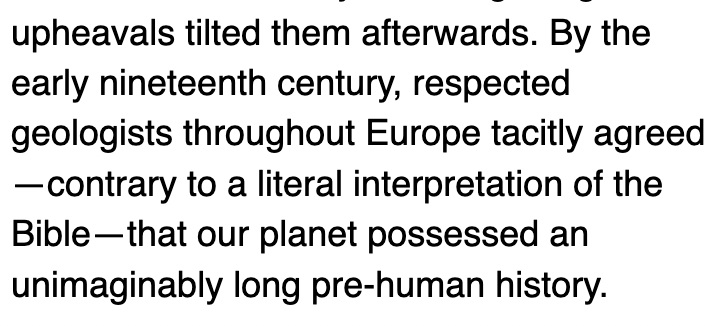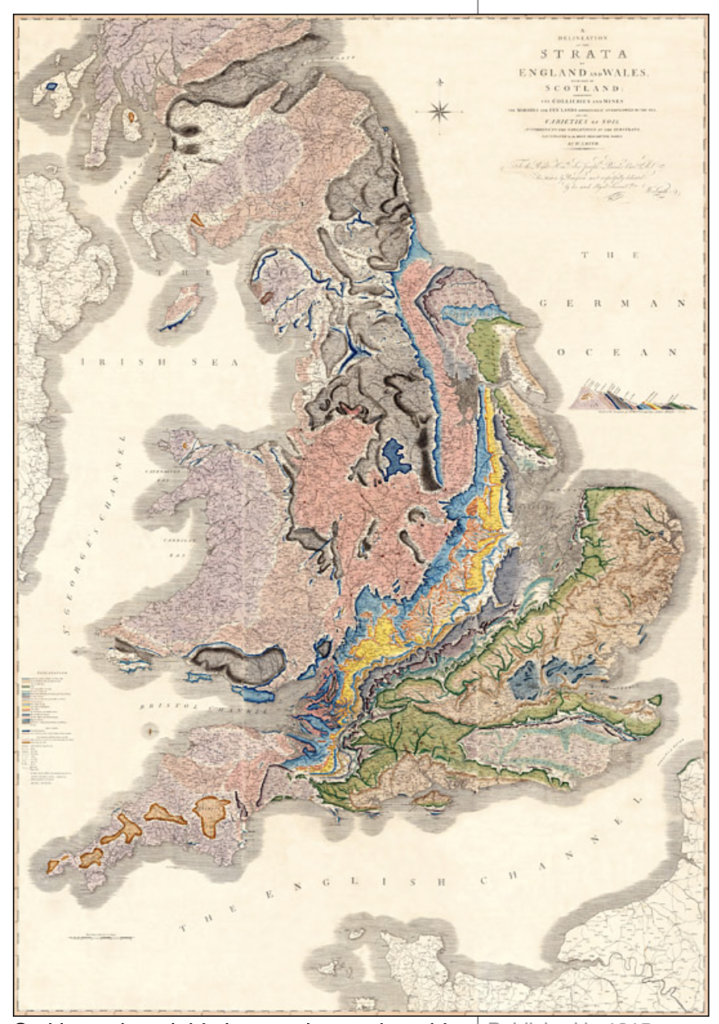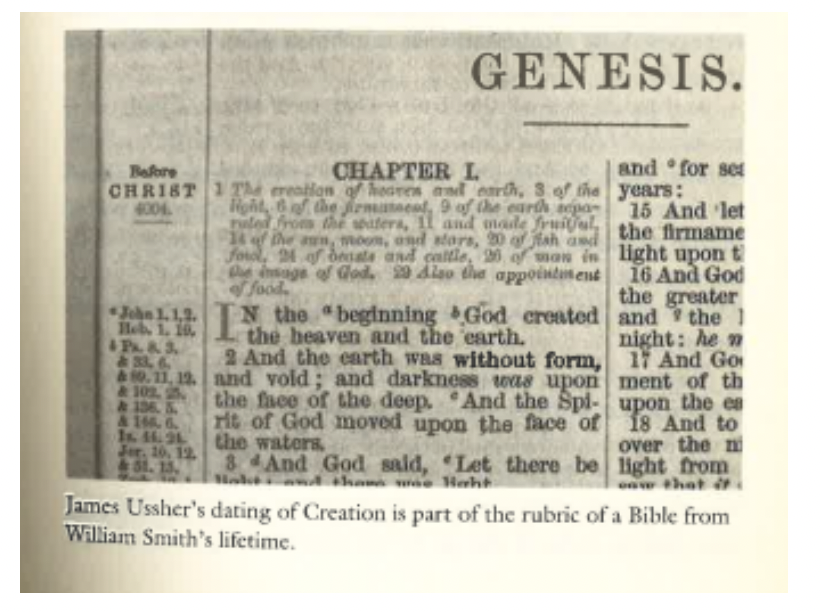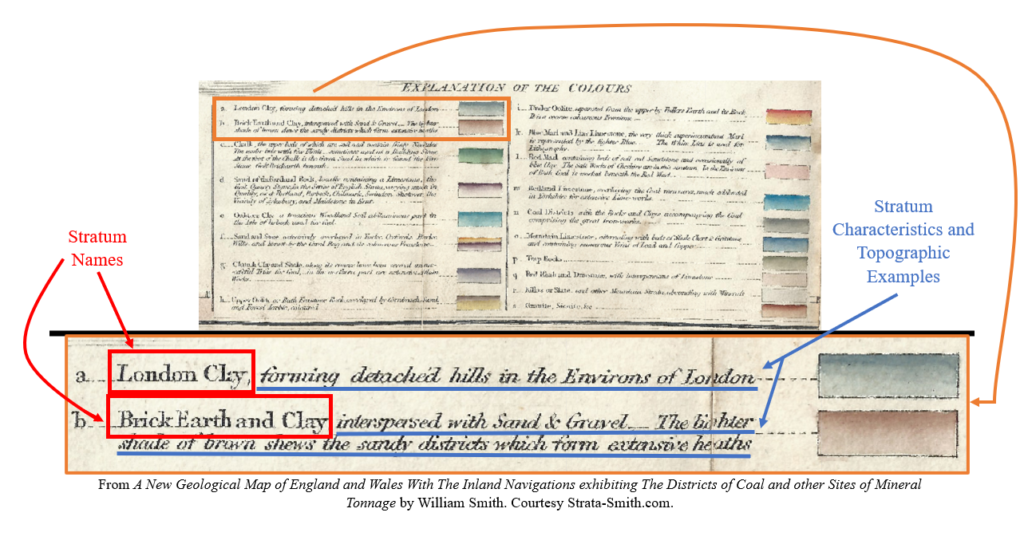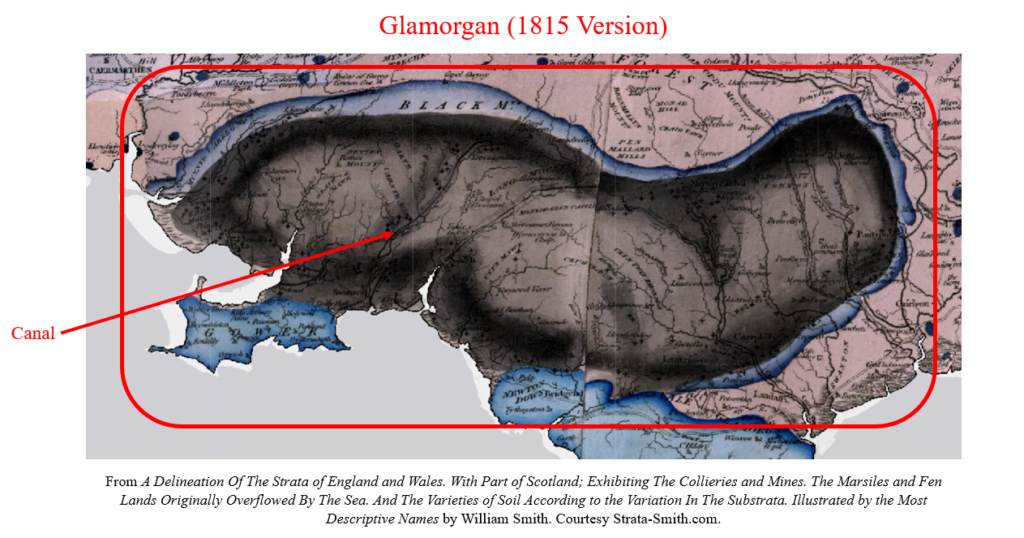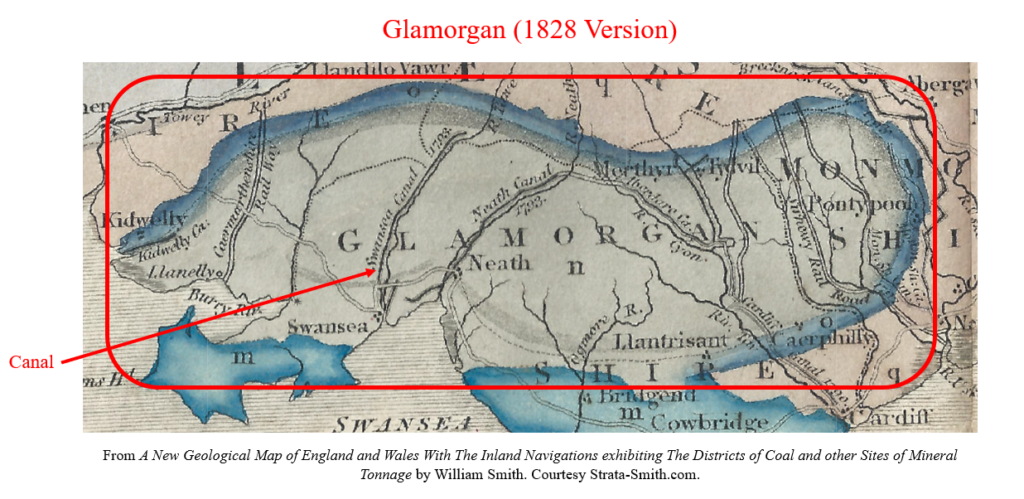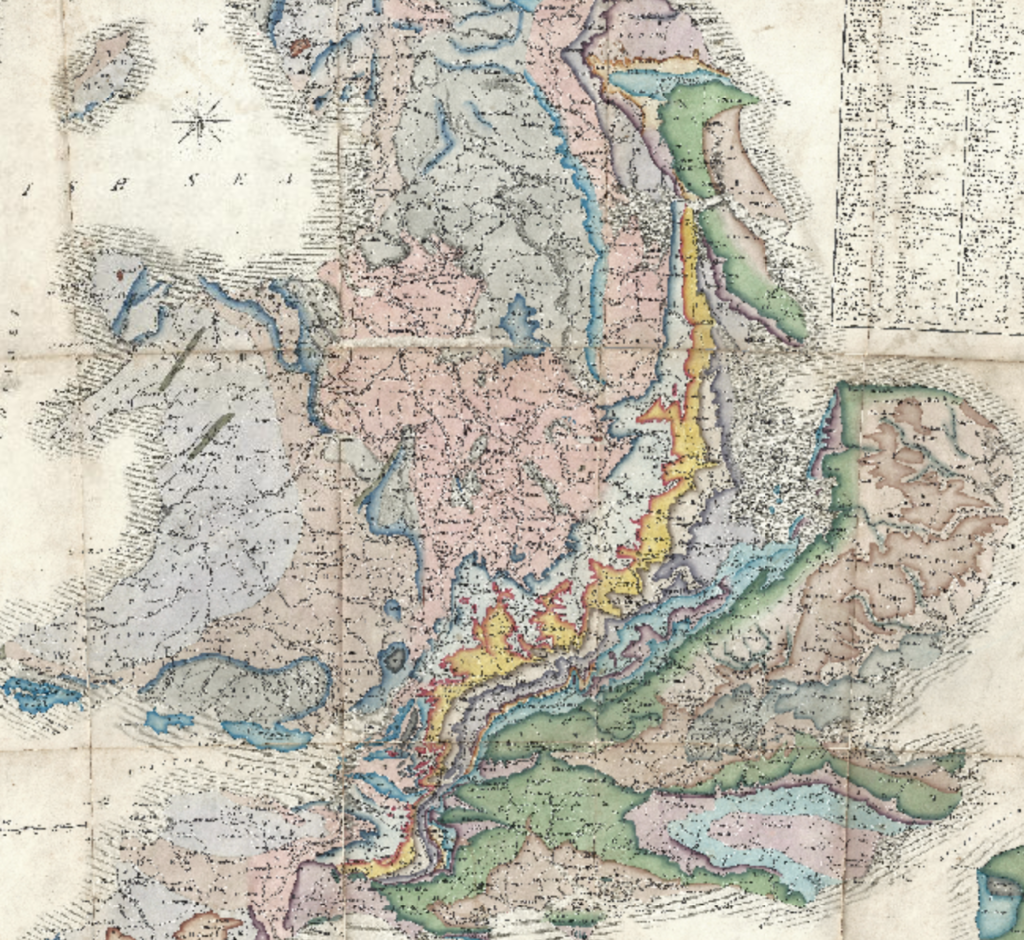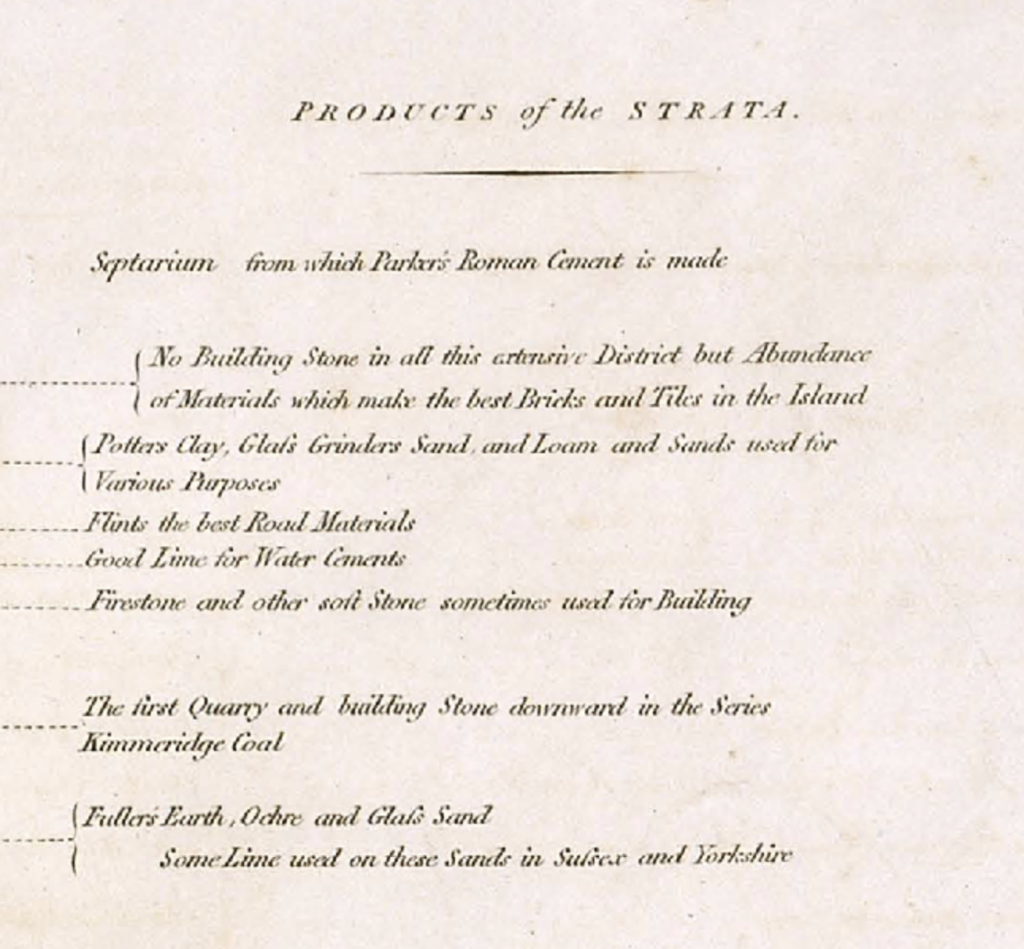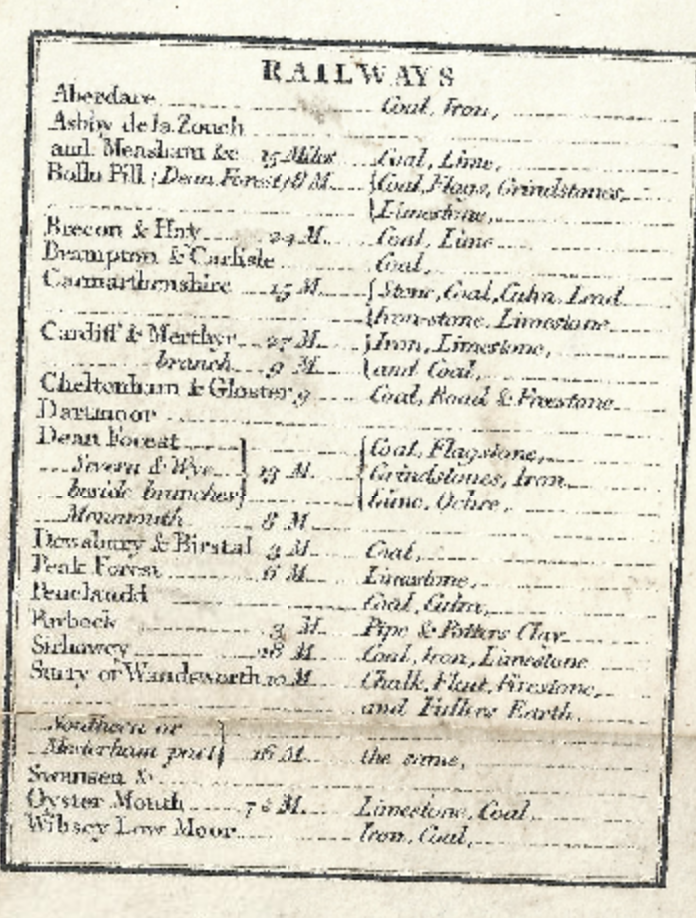William Smith (1769-1839) was one of the most important early geologists who created a detailed geographical map of the United Kingdom.
“The Map that Changed the World” is an excellent article that offers insight into the history of geology and its earliest theories for how the world was created. William Smith was born during the era know as the “enlightenment” a time when philosophical and scientific thought began to replace the “old” ways of thinking. However, when Smith became a geologist, some of the old theories remained in the field. Particularly, to the dating of the earth, which early guesses dated the age of the earth to over 4,000 years old.
Smith’s map is incredibly detailed and helped to dispel the myth that humans and earth were created at the same time. The resource “William Smith-Interactive map” helped to visualize the detail Smith included in his map of the UK. In the interest of keeping my post to the assigned limit, I will focus my map discussion on the “Geological Section from London to Snowdon.”

The geological map includes the correct height and altitudes of the hills, to the valleys found between the cities, and accurate measurements of the age of the geography found between London and Snowdon. Depicted in the map, the land around London is flat and open compared to the hilly countryside found outside of London. Which would explain why London has a lager population compared to Snowdon, which has a rugged and hilly countryside. interestingly the hills and geographic countryside near Snowdon is older compare to the formations found near London. They are also more developed which “could” indicate that the hills around Snowdon had more time to develop thus, their larger size compared to the hills found around London. I also like how the resource uses color to indicate the age and the different geographic features found on the map. It helps to visualize the age of each mountain, valley, and river found on the map and the geographic formations mentioned in the articles about William Smith.
https://earthobservatory.nasa.gov/features/WilliamSmith
Click to access snowdon_london.pdf
http://www.strata-smith.com/map/


